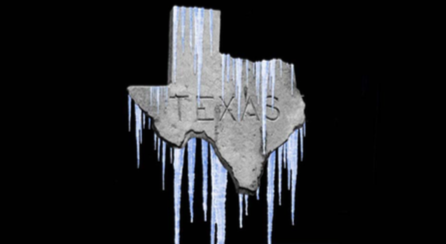MSNBC
By Hayes Brown
As the planet’s climate changes, the only constant is unpredictability.

The plight of millions of Americans freezing in Texas is heartbreaking, infuriating and a reminder of just how unprepared the U.S. is when it comes to dealing with the impacts of climate change. Right now, we’re living through a massive shuffling of the cards when it comes to our planet’s weather systems. In this interregnum between what came before and the end result of the Anthropocene’s massive transformation of the globe, the only constant will be unpredictability.
As of Tuesday evening, the Electric Reliability Council of Texas, which provides power to 26 million Texans, was still unsure when full power would be restored across the state. The massive, unseasonal demand from residents trying to heat their homes far outstripped Texas’ energy supply, which was already hampered by the weather. As it stands, ERCOT is ordering rolling blackouts to keep the power grid from collapsing entirely under an unplanned blackout, which could leave Texans without power for “maybe a month.”
“If you have power, please try to live almost like you don’t,” Austin Mayor Steve Adler urged residents. “If you have heat, run it low, run it lower. If you have lights, try just to use the light you need at that moment.”
It’s worth thinking about why this happened and why it can’t be dismissed as a one-off freak event, like so many other once-in-a-generation disasters have been in the last five years. So, imagine a swirling mass of frigid air over the Arctic being held in place by an invisible force field. Sometimes the air manages to slip a bit under the shield and drift down North America. That, in simplified terms, is what happened here: A pocket of the polar vortex, which the air of the jet stream normally holds in place, got loose and decided to visit the U.S.
It’s a totally natural phenomenon, which is the good news. The bad news is that the jet stream has been getting weaker over the last few years as the areas on both sides of it have gotten warmer. That has made it easier for warm air over the Arctic to shove the colder air south, fragmenting the vortex. And so, while the jury is still out on whether we’re seeing a true surge in freak cold snaps, the number of times you’ve heard the term “polar vortex” has skyrocketed since 2014.
As fellow MSNBC Daily columnist Emily Atkin reminded us in her newsletter, Heated, on Tuesday, back then the frigid temperatures were a punchline for climate skeptics who delighted in pointing out the cold weather in contrast to fears of global warming. It’s a dangerous fallacy, one that even I sometimes have trouble shaking.
New York City got its first serious snowfall in over a year this month. The small blizzard felt more normal than the unnatural-feeling rain that had plagued us for most of January. But then I remembered: It’s the cold that’s an anomaly now. Instead, New York is now considered a subtropical region, as winters refuse to dip much below freezing on average. And the welcome respite from that truth in the form of nearly a foot of snow had come from another fragmented polar vortex.
In reality, the suffering in Texas — much of which we likely won’t hear about for days or weeks — is a reminder of how shortsighted climate skepticism really is. A focus on the immediate present at the expense of the future is what got us into this mess. It’s also set to be our collective ruin.
I say that not because I’m inherently a pessimist but because of how averse American leadership up and down the federal ladder can be to investing in changes or, worse, being nimble. How do you build resilience into a system when you’re not entirely sure what you’re safeguarding against? Should arid states like Arizona be preparing for the remnants of typhoons to make their way farther inland alongside their skyrocketing summer temperatures? How much should Texas cities invest in snowplows versus ripping up the asphalt that encourages massive flooding during hurricanes versus modernizing the state’s weirdly isolated electrical grid?
The suffering in Texas — much of which we likely won’t hear about for days or weeks — is a reminder of how shortsighted climate skepticism really is.
There’s no quick solution to the problems Texas faces, but these aren’t abstract issues: People are literally dying of carbon monoxide poisoning trying to heat their homes by running their cars inside their attached garages. Thousands of Covid-19 vaccines doses were at risk of spoiling from the power outages. And crops that were planted ahead of the spring harvest are dying under the snow and ice, burdening farmers who were already struggling after years of the Trump administration’s trade war.
Adapting to climate change means America’s cities and states will have to embrace the idea that there is no such thing as stability from year to year, not anymore. But as Texas shows, the lesson will be a hard and costly one to learn, both in dollars and in lives.